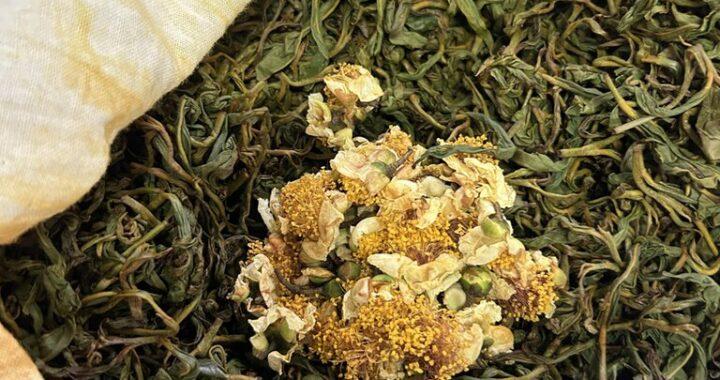Tea blending is one of the most involved activities anybody can engage in when it comes to tea. It can be one of the strongest acts of appreciation any tea lover can do and holds the potential to push products to new heights and beyond any flavour profile you have experienced. The only downside to this age-old practice is that –surprisingly- the simple act of mixing tea with something else can be incredibly complex.
Before we begin I have to take a bit of wind out of your sails. There is no way I could do the multi-layered topic of blending and mixing flavours justice in this singular blog post. There is simply way too much history and knowledge out there to sink your teeth into. However, what I can do is offer one way to approach blending teas that will hopefully help you to find your way into this topic and most important of all, simply get started. But don’t let yourself be held back by how daunting the world of understanding and mixing flavours might seem. After all, you’re not alone on this journey! My name’s Lukas, one of the interns here at Obubu and I’m here to not only guide you through the world of tea blending but also to teach you a bit about flavours and appreciating tea in new, exciting ways! Let’s unravel this complicated topic and start… at the very beginning!
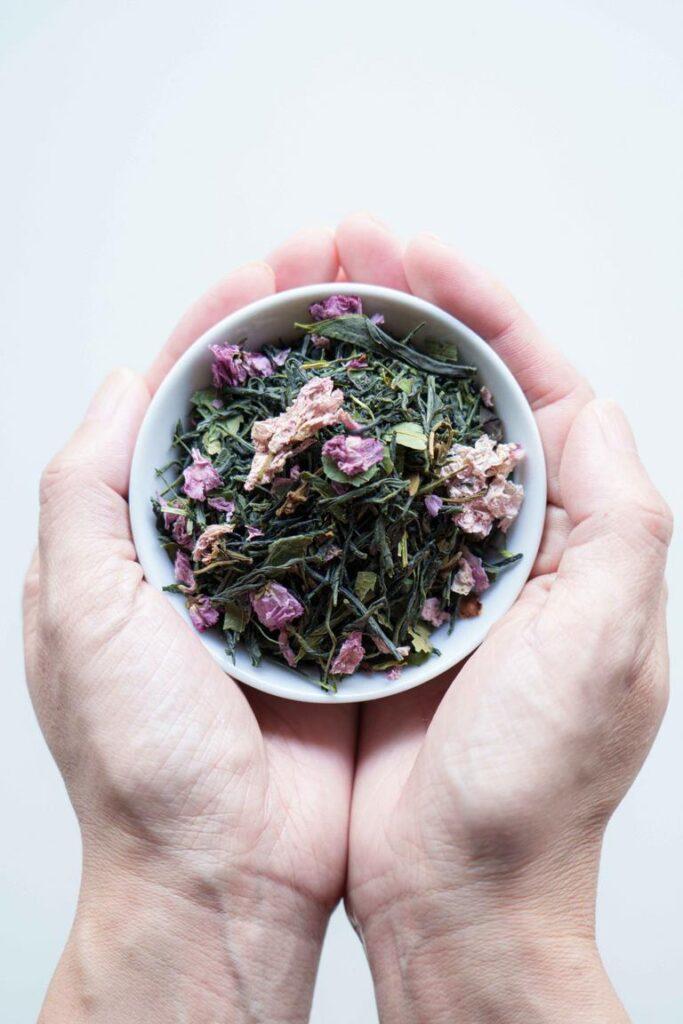
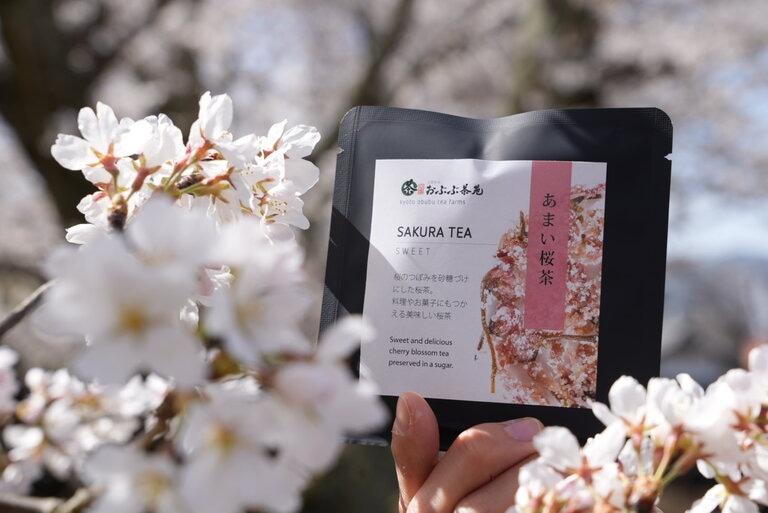
One of Obubu’s blended teas – delicious sakura-sencha made with hand sorted sakura flowers!
What are tea blends?
The term tea blend refers to nothing more than the act of mixing tea with other infusible ingredients. These can be herbs, flowers, fruits… or even other teas! There are a million different reasons as to why people blend tea, but in the tea industry in both Japan and the world, the most common reason is consistency. The most practised type of blending here in Japan is blending tea with other tea. Because tea is a natural product and the taste of each field is never exactly the same, wholesalers usually combine a lot of different batches of tea to be independent of this natural fluctuation and create a consistent image for their customers. In Japan this is called Shiage-Cha and unblended tea is called Ara-Cha. Some of the most famous of all teas are blended, including Earl Grey and English Breakfast tea.

An example of unsorted Obubu aracha – you can see the husks and stems that are usually sorted out in bright green!
Of course, those who know a bit about tea will know that Earl Grey is not made by just mixing different types of tea. For Earl Grey, another type of blending comes into play: mixing tea with ingredients other than tea. In the case of the English’s favourite tea, that is just one ingredient – Bergamot peels – but there are other famous blends that can include more than 10 different ingredients, like Masala Chai. This practice of combining tea with other ingredients is as old as the drink itself and every culture has its very own unique take on blending tea. This can range from creating herbal blends without any parts of the tea plant to simply blending true tea with a singular, other ingredient. In this post, I’d like to focus specifically on building blends from true tea bases. That means taking a tea from the Camellia Sinensis plant and creating blends using this tea as a basis. I hope that narrowing down such an immense topic in this way might help you to get over the daunting barrier of entry. However, one question still remains… How do we actually get started? So let’s stop with the introductions and build this up from the very beginning. The What, Why, and How of blending teas, let’s go through them all together and make our own tea!
Safety Tips:
- Always use dry ingredients. Only ingredients with a water content below 5 % are shelf stable. Either buy dried ingredients or dry them thoroughly before blending.
- Never use spices, herbs or other ingredients you don’t know in a blend. Some can be poisonous when infused, incite an allergic reaction or be harmful to your health in other ways. Do your research before using any ingredient in a blend.
- Store your tea in an airtight container without anything wet or damp inside
- Be especially careful with essential oils and items you or anyone else you intend to serve the tea to could be allergic to. Once again, I urge you to do your research.
Step 1. What?
So what do you actually need in terms of equipment? Well, you’re in luck, because it’s mostly stuff you should already have somewhere in your kitchen! First of all, you need some jars and bowls to mix and store your tea. It’d also be nice if we had something to actually brew our tea so having a tea pot will be very helpful. Having a scale and notebook nearby will also come in very handy, so make sure you have a few notebooks next to you. You’re going to need them all for recording every single one of your delicious teas. And that is just about all that’s necessary! Well, besides the actual tea, but we’ll get to that in the next step!
Step 2. Why?
So now that we have all of our high-tech equipment nearby we can actually get to blending! However, there is a lot of tea out there so we’ll have to first figure out what we actually want to create, in our case what tea we want to use as a base. A good question to ask ourselves in this case is: Why do we want to blend? Do we want to create something to soothe our mind, help against an illness or merely play around and create something tasty? Simply asking ourselves this question can narrow the selection of ingredients and bases down a lot. Maybe you know that one herb helps against that back pain you keep having and you want to combine it with some sort of loose-leaf tea to make it more delicious. Maybe you have one tea you really like and want to combine it with some other flavours to see what might happen. In any case, having a general outline as to what you want to create can be very helpful. Figure out what you like and what you want out of your blend, and you’ll see the path to a delicious cup of self-made tea become a lot clearer. But what comes after you’ve chosen a basis for your blend? How do you know what fits with that herb or this tea? Let’s continue our blending journey and talk about flavours!
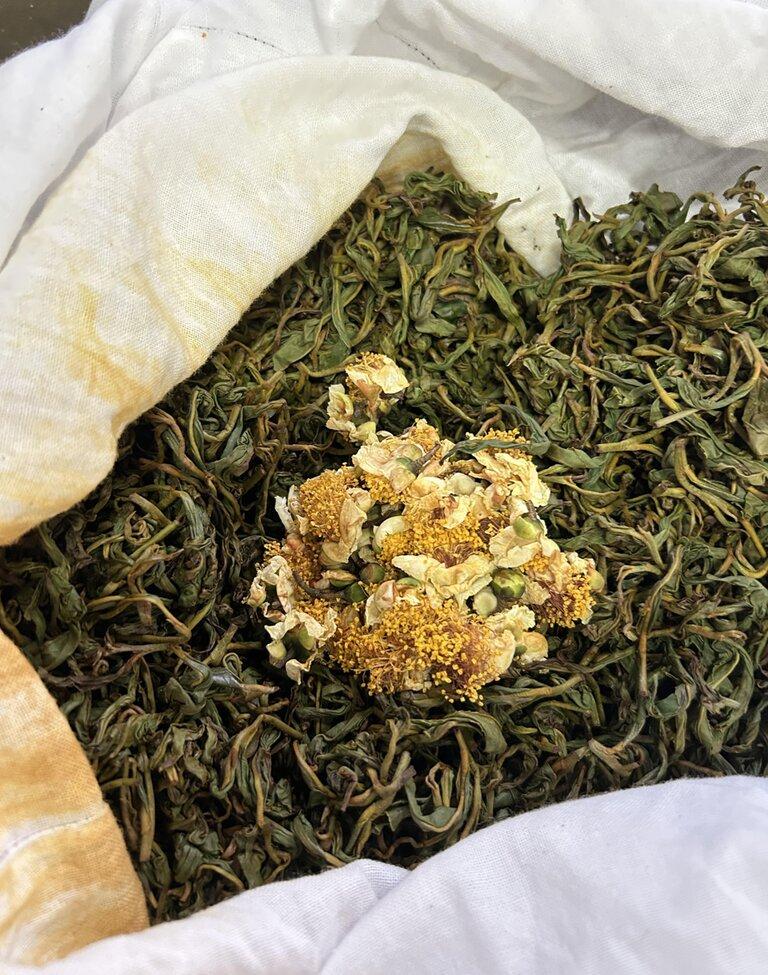
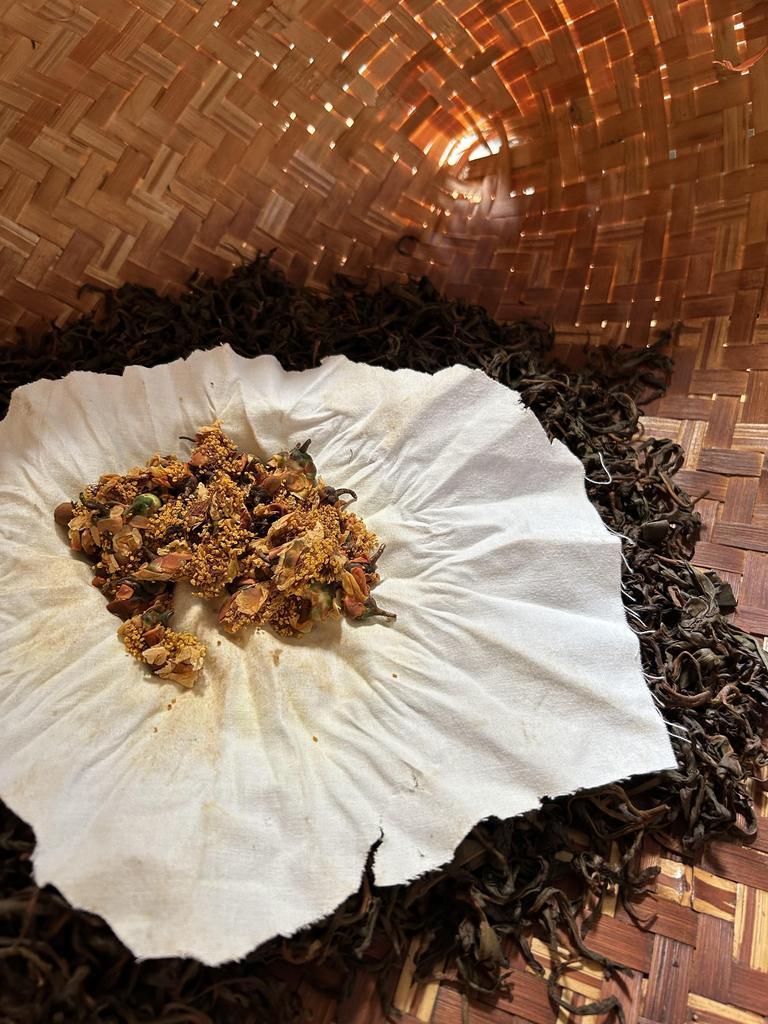
A black tea experiment – mixing tea flowers with hand picked organic tea leaves!
Step 3. How?
In general, you can divide the ingredients of a tea blend into 4 categories: The Base, The Support, The Accent and The Visual. The Base is simply what loose-leaf tea you choose and the Support is the other main ingredient that seeks to build upon and enhance its original flavour. The Accent is the thing that makes the blend pop and breaks through the pairing of the Base and the Support, so things don’t get too boring. This is usually something like a spice or a fruit with a very distinct flavour. Lastly, the Visual is something that doesn’t necessarily change the flavour of the blend but that makes the finished product look more visually appealing. This can be something like, for example, flower buds that bring a lot of colour into the cup but don’t really add much in terms of flavour.
Maybe you can already see some of your favourite ingredients fall into these categories. This is of course not the only way to think about blends, but is very helpful in bringing a bit more structure into your ideas. However, should you still be lost in the jungle of flavours, there’s no need to worry. Let’s go further into what ingredients can actually fulfil the roles we just talked about.
For our purposes, the Base is of course loose-leaf tea, but the following 4 types of ingredients can fulfil any of the other roles. The ingredients that are mostly used in tea blends are Fruits, Herbs, Spices and Flowers. Fruits like dried berries, citrus or apple pieces bring natural sweetness and acidity into your blends. Herbs like mint and lemongrass can bring many health benefits and natural grassy aromas into your tea. Spices like cinnamon, ginger and cloves can give your teas an incredible punch and kick that is unmatched in intensity and flavour. On the exact opposite, Flowers like cherry blossoms, roses and lavender can bring very delicate and lovely notes into your tea.
Dividing the components into these 4 categories is very useful in figuring out what there actually is out there in terms of possible ingredients. So now you know about ingredients and their roles in a tea blend, but how can you tell what fits into what role? If you answered the question I gave you in Step 2 about why you want to blend tea, you should already have a rough flavour profile in mind. What can also be very helpful, is imagining these profiles in terms of moods and seasons. Do you want your tea to be a nutty autumn tea? In that case, using a darker tea like black tea together with warm spices like cinnamon might be a good idea. If you want a light, springy infusion you should probably go with a light green tea and some seasonal flowers. Simply going with what feels right, given your initial idea for a blend, should keep you going for a while. Take some time to think about all this and when you have a good idea of what you want to create and maybe even have some ingredients picked out, come back to this post and we can finally leave the dry theory and actually get blending!
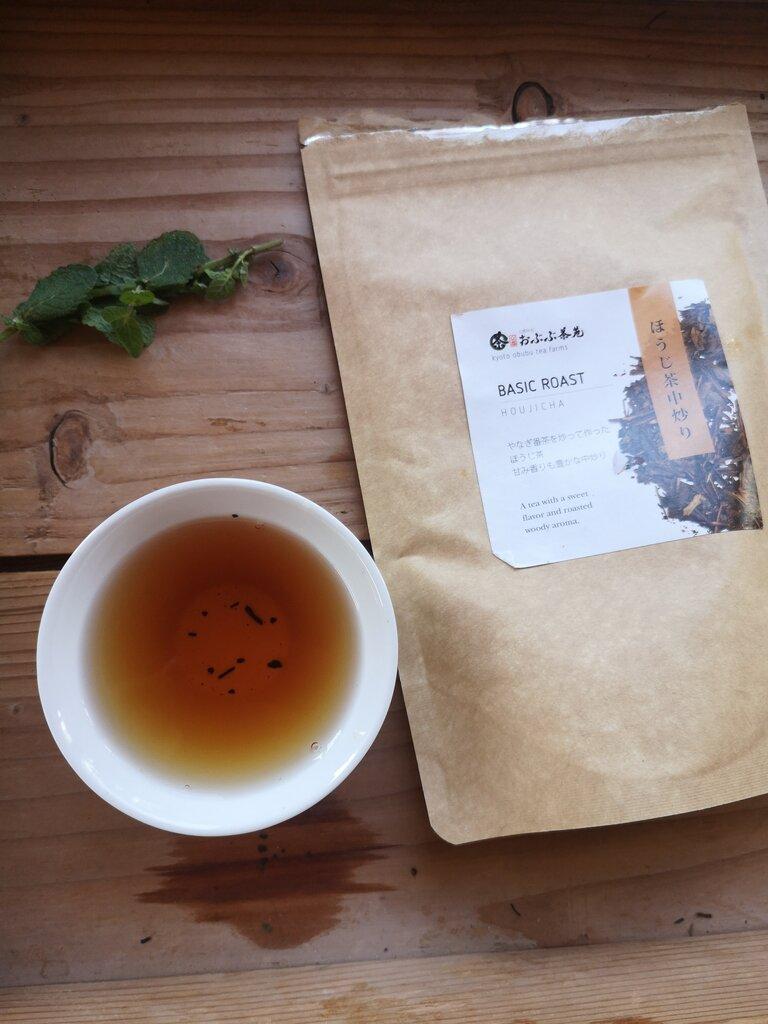

Another blending recipe you try at home! Try mixing fresh mint and houjicha together – perfect for autumn!
Step 4. No more questions, let’s make some tea
Do you have your equipment ready? Got all of your ingredients? Then get blending! At first, especially if you’re still inexperienced, you will probably not get every blend right and that’s OK! It doesn’t have to be perfect, just play around with the flavours you enjoy, do what feels right and see what works and what doesn’t! However, for exactly this reason, it’s best to start out with blending just small amounts, about 1 or 2 teaspoons of loose-leaf tea, to get started and not waste too much of your ingredients if the blend does go sour. Simply start by mixing 1 or 2 teaspoons of your base with your Support at a ratio of about 3:1. Record the exact weight and what ingredients you used in your notebook for future reference. You can either try to brew your tea right now or add your Accent at a ratio of about 3:0.5 to your base. Once again, record in your notebook. You can repeat this step with as many ingredients as you like. You can also add your visual at a ratio of about 3:0.25 to your base, or you may as well simply enjoy your tea. After you brewed your blend, make sure to write down your opinion in your notebook. Did you like it? Did it have the effect you had in mind? Either try something else, improve your blend or if you liked your tea, make more of it.
And that’s just about it! As you can see the actual process of blending isn’t all that difficult, it only requires patience and good documentation so that you can remember what works and what doesn’t. Now that you know all of the basics and made your first blend, it’s all about exploration and experimentation. Feel free to deviate from the ratios given here, play around with the products you like, figure out what works and what doesn’t, and most important of all, enjoy your tea, whether it be alone or with loved ones! Thank you so much and enjoy!

